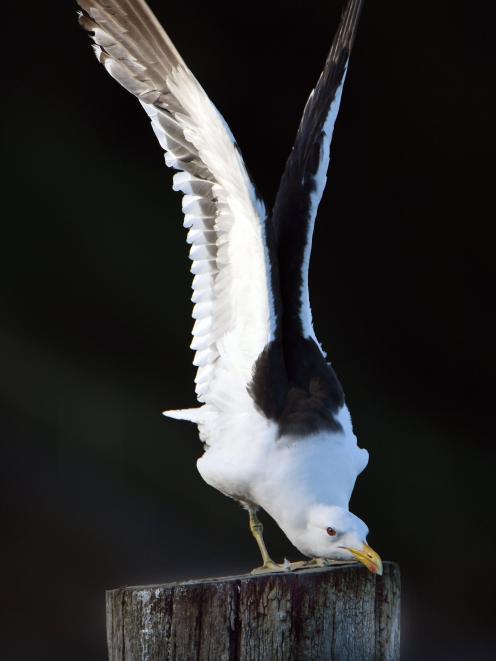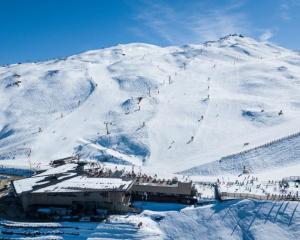
No, not perched. Perched implies a small thing gripping a twig, whereas this gull is a meaty beast and its wide webbed feet are doing no gripping. The gull is simply standing on the street light and from there it is surveying the world.
It’s a black-backed gull, though from below I see mainly white. And what white it is — eye-aching white, faultless white, hospital-bed-sheet white.
Though gulls frequent landfills and sea shores, though they eat road kill and rotting giblets, you never see a soiled one. How they do it, I don’t know.
The gull’s feet are just means of standing, walking or paddling. Its arms are given over to flight. The beak’s a pruning hook.
And that pruning hook is everything to the gull. It rips the guts out of roadkill, dismembers rotting fish, lifts mussels high in the air to drop and smash them.

Here in Lyttelton, the smaller red-billed gulls have gone rogue. They gather in noisy flocks at picnic sites and outside the fish and chip shops.
They’ve learned to pressure us to throw them food. They’ve learned to snatch from unattended heaps of chips. They’ve learned how easily we big apes can be intimidated by a lot of screeching and a welter of wings. They’re only too happy to mug us.
If the black-backed gulls were to try the same tricks, if they, too, learned stand-over tactics, things might get serious. That beak could blind a man with two stabs, then suck out the juices.
"Look out."
A woman across the road has opened her kitchen door and is calling to me cheerfully.
She gestures at the gull. "Be careful."
"Why? Does it attack?"
"He poops."
And of course the road beneath the street light is dotted with dried white blobs, each an inch or two across.
"Thanks for the warning."
"His name’s Henry. He’s been coming here for years."
The woman gestures to the scrap of patio outside her kitchen window. "We put out food for him."
"That’s nice."
She looks up at the gull with evident affection and the gull looks back at her with — well, with what?
It has the look on its face that it wears from the day of its hatching to the day of its death, a look of impassivity, of cold self-interest, of amorality. If gulls have feelings they don’t show them.
The same is true of most creatures. A grasshopper’s face is an impassive mask, as is a fish’s or a crab’s.
It is only with what we consider the more evolved species, the ones higher up the tree of life, that feelings become legible, to us at least.
We can tell when a dog’s happy or scared or sad. And if you watch gorillas in the zoo for half an hour you feel you know them intimately.
But this gull gives nothing away. Does it know pleasure?
It should. Despite its size it’s a magnificent flyer. When the wind is strong it can just step off the land and ride the air without exertion, holding itself level by tiny adjustments of its wings, its feet tucked under, its breast an aerial dinghy, perfectly aerodynamic.
And on still days it can rise high on the thermals and just circle above our township looking down for carrion. As it rides the air with such mastery does it feel no surge of pleasure, does it not inwardly smile at the ease and wonder of it? I don’t know.
What I do know is that I understand the woman’s urge to feed this bird and tame it with a name. I do the same myself.
I stock a bird table in winter. But I am unsure why. Is it just because we find them beautiful? Or are we trying to bribe them closer, to delude ourselves that they are friends?
Are we seeking atonement for all our species has done? Or do we genuinely just want to please?
And if so, why seek to please a gull that would cheerfully eat our eyes?
No, not cheerfully. It would just eat them.
- Joe Bennett is a Lyttelton writer.












